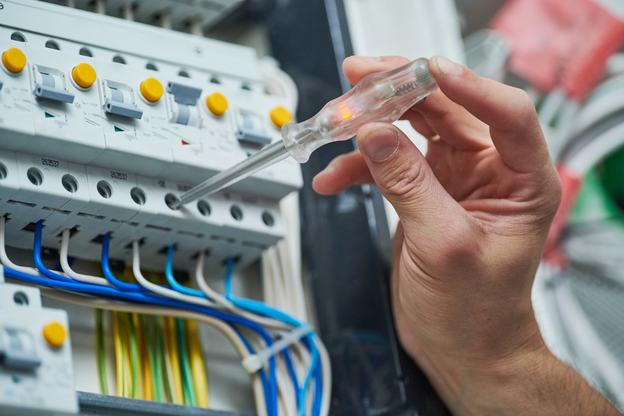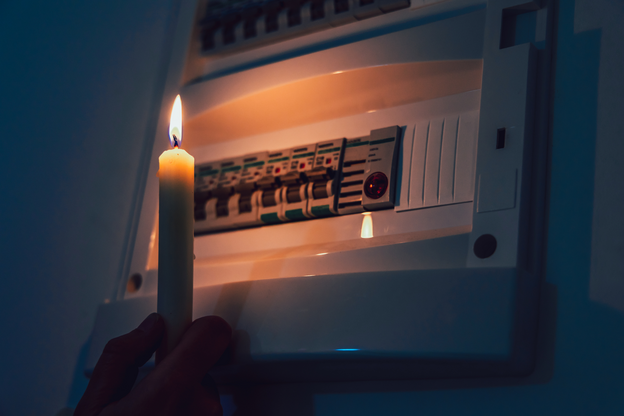
A switchboard is a critical component of any home’s electrical system, acting as the central hub for electricity distribution throughout the household. It ensures that power flows smoothly and safely to all electrical appliances and fixtures. However, like any other home part, switchboards can become outdated or faulty over time. Using an old or malfunctioning switchboard can lead to potential risks, including electrical fires, power surges, and personal safety hazards.
The relevance of regular electrical checks can’t be overstated. Over the years, many houses have maintained their original wiring and switchboards, which may no longer meet current safety standards. This article guides homeowners on when it might be time to consider replacing their switchboard, ensuring the safety and efficiency of their home’s electrical system.
Understanding the Basics of a Switchboard
A switchboard is a central panel that controls the flow of electricity from the power supply to the various circuits in a building. Its primary function is to distribute power where it’s needed while providing safety mechanisms to protect against electrical overloads or faults.
The typical switchboard comprises various components, including circuit breakers, safety switches, busbars, and sometimes older features like ceramic fuses. Circuit breakers automatically interrupt the flow of electricity in the event of a fault, while safety switches are designed to prevent electric shocks by shutting off power quickly. Busbars distribute power among the different circuits. In older systems, ceramic fuses are less efficient and safe than modern circuit breakers.
A few differences stand out when comparing older and modern switchboards. Older switchboards often lack the advanced safety features of newer models, making them less reliable in preventing electrical hazards. Moreover, as homes have evolved to include more electronic gadgets and appliances, the demand on these systems has increased. Modern switchboards are designed to handle these higher demands and comply with current safety standards.
Regular maintenance and checks are essential to ensure that a switchboard is functioning correctly. Periodic inspections can help identify signs of wear and tear or components that may require updating, thus enhancing safety and efficiency.
Signs That Indicate Your Switchboard Needs Replacement
One clear sign that your switchboard may need replacing is frequent circuit breaker trips. If the circuit breakers regularly trip, it can indicate that the switchboard is unable to handle the current electrical load, which can be dangerous if left unaddressed. This situation often arises as families add more appliances and electronics to their homes without considering the upgrade needed for their switchboard.
Overheating switches or a burning smell from the switchboard are severe warning signs. Such conditions could indicate overloaded circuits or failing components, both of which pose a significant fire hazard. It’s crucial to address such issues promptly to prevent potential disasters.
The presence of outdated features like ceramic fuses is another tell-tale sign that a switchboard is antiquated and possibly unsafe. Ceramic fuses are known for their inefficiency in handling modern electrical demands. Modern switchboards equipped with circuit breakers and safety switches are far superior in terms of safety and functionality.
Physical signs of wear and tear, such as rust or corrosion on the switchboard, should not be ignored. These signs can affect the switchboard’s performance and may lead to malfunctions or safety hazards. Corrosion, in particular, can impede the electrical connections, potentially leading to shorts or fires.

Safety Concerns with Old or Faulty Switchboards
Using an old or faulty switchboard presents several safety concerns for homeowners. First and foremost, there is a potential fire hazard. Faulty wiring, overloaded circuits, and obsolete technology increase the risk of electrical fires, which can have devastating consequences for both property and life.
Electric shocks are another risk associated with outdated switchboards. If the board lacks the necessary safety switches or if the wiring is compromised, there’s an increased chance of experiencing electric shocks, which can be life-threatening.
Additionally, power surges are common with older switchboards and can damage home appliances and electronics. These surges can damage sensitive equipment, leading to costly repairs or replacements.
Homeowners must also consider the legal and insurance implications of maintaining an outdated switchboard. Many insurance policies may have clauses related to the home’s electrical safety; an obsolete or non-compliant switchboard could affect coverage. Furthermore, keeping up-to-date with safety regulations is essential to avoid legal repercussions.
Benefits of Upgrading Your Switchboard
Upgrading to a modern switchboard offers numerous benefits, including enhanced safety features that protect your home. Modern switchboards come with advanced safety switches and circuit breakers that quickly disconnect power in case of a fault, thereby minimising the risk of fire and electric shocks.
These newer systems also have an increased capacity to handle the demands of today’s electronic age. With many homes incorporating more gadgets, appliances, and technology-dependent devices, having a switchboard that can manage these demands without tripping frequently is crucial.
Modern switchboards offer potential savings through improved energy efficiency. Newer systems are designed to be more efficient, helping reduce unnecessary power consumption, leading to lower electricity bills over time.
Another significant advantage of upgrading is compliance with current electrical standards and regulations. Modern switchboards are built to meet today’s stringent safety standards, ensuring the safety of occupants and compliance with local electrical codes and insurance requirements.
Choosing the Right Professional for Switchboard Replacement
When it comes time to replace your switchboard, choosing the right professional is vital to ensure the job is done safely and correctly. Hiring a licensed electrician or electrical contractor with the necessary qualifications is essential to carry out the work. This ensures quality workmanship and compliance with legal and safety standards.
Evaluating the qualifications and experience of professionals is crucial. Homeowners should verify that the electrician or contractor is licensed and insured, has a solid track record of similar work, and comes highly recommended through reviews or personal referrals.
There are key questions to consider when consulting with an electrical expert. Asking about their experience with similar jobs, their approach to safety, and their understanding of local regulations can provide insight into their suitability for the task. It’s also wise to inquire about warranties or guarantees on their work.
Comparing quotes from different electricians or contractors is recommended to ensure competitive pricing. However, it is important to balance cost with quality, ensuring that the lowest bid doesn’t compromise the quality of materials or workmanship. Ensuring quality workmanship means the services will meet safety standards and function reliably for years.
Conclusion
In conclusion, recognising the signs your switchboard needs replacing is vital for maintaining the safety and efficiency of your home’s electrical system. From frequent circuit breaker trips to physical signs of deterioration, these indicators should prompt a careful evaluation of whether a switchboard update is necessary. Upgrading to a modern switchboard offers numerous benefits, including enhanced safety features, improved energy efficiency, and compliance with current electrical standards.
Taking proactive steps to ensure electrical safety prevents potential hazards and protects property and lives. Homeowners are encouraged to schedule regular inspections and consult with professional electricians to assess the condition of their electrical systems. By doing so, they can ensure their homes are equipped with safe, efficient, and compliant switchboards, providing peace of mind and security in the long run.




 POSTED BY
POSTED BY 

